‘Like hell’: Horrifying new details of crash between Japan Airlines Airbus A350 and Coast Guard plane at Tokyo airport
Investigators are recreating the chain of events that saw a packed passenger plane smash at a busy airport, with multiple theories now being probed.

An investigation has begun into the chain of events that saw a packed passenger plane smash into a Japanese Coast Guard aircraft while landing at a major airport in Tokyo, erupting into flames.
Japan Airlines flight 516 took off from Shin Chitose Airport in the city of Sapporo, on the mountainous island of Hokkaido in the country’s north, at 4.22pm.
The short hop domestic flight travelled south towards Tokyo’s Haneda Airport with 367 passengers and 12 crew on board the Airbus A350.
After 1 hour and 25 minutes, the plane made its final approach across Tokyo Bay at 5.45pm and touched down on Runway C two minutes later.
It’s at this point that JAL516 collided with a Japan Coast Guard aircraft that was somehow on the runway in its direct path.
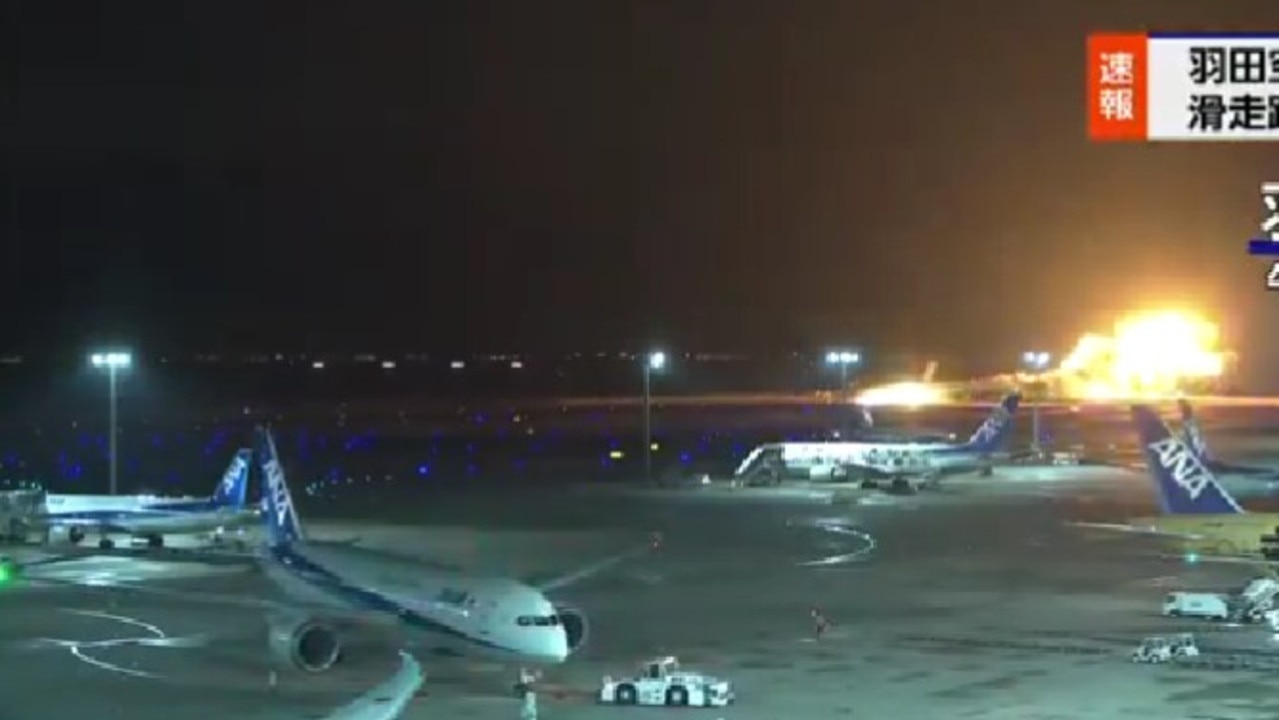
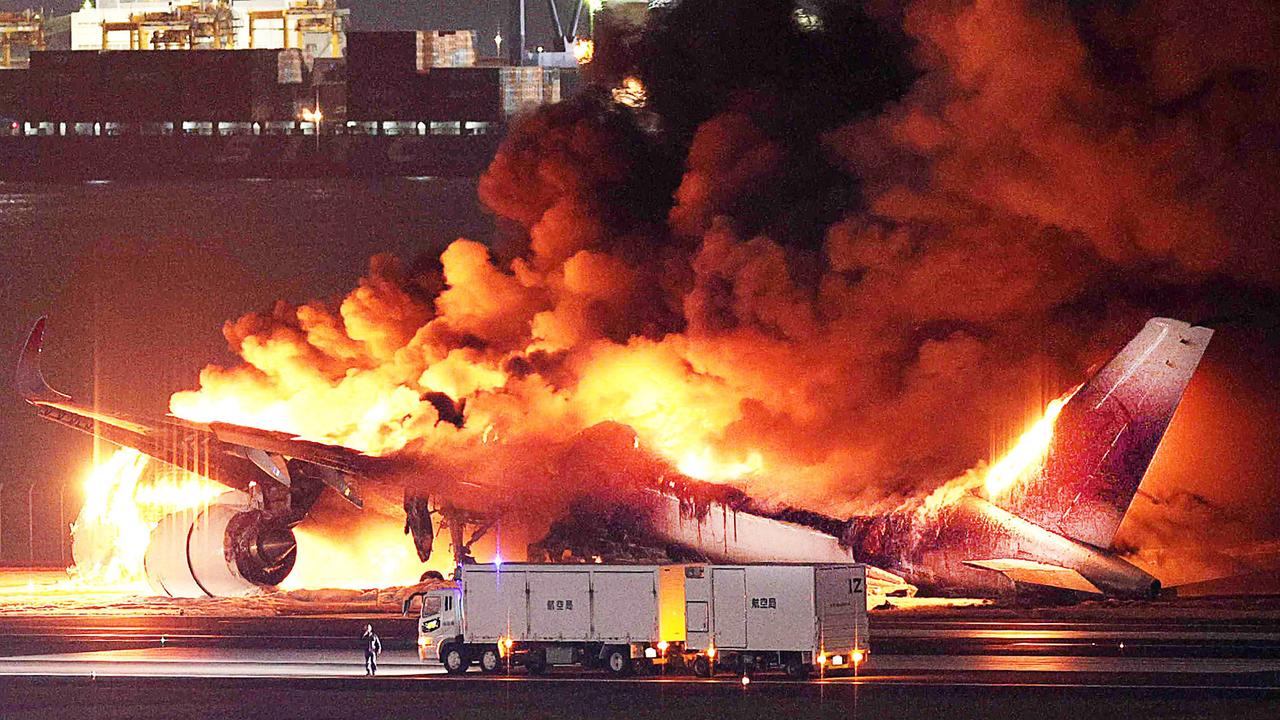
The Bombardier Dash-8 was full of aid equipment, including fuel, it has been claimed, bound for the port city of Niigata as part of emergency relief efforts in the wake of a 7.6-magnitude earthquake.
The Coast Guard plane appears to have almost instantly burst into flames. The pilot managed to escape but five crew members on board perished.
Social media vision shows the Airbus A350 tearing down the runway, leaving a trail of flames behind it, before coming to a stop.
‘Professional negligence’ probed
At a press conference late on Tuesday, Japan Airlines managing executive officer Tadayuki Tsutsumi said the flight had made “a normal entry and landing” on the runway.
His colleague Noriyuki Aoki also insisted the flight crew had received proper permissions from air traffic control to land.
Television news network NHK has reported police are investigating probable professional negligence, but no further details have been released.

Michele Robson, a British former air traffic controller, told Sky News UK of the Coast Guard plane: “It looks as though they were asked to stop short of the runway and that did not happen for some reason.”
Ms Robson added: “The chances are that it may have happened very quickly, the whole incident, and the controller didn’t spot that the aircraft was on the runway. This could be because it was at night, so it’s hard to see visually.”
Footage from inside Japan Airlines plane that crashed
— Pubity (@pubity) January 2, 2024
pic.twitter.com/6Do4qwNMeZ
However, chatter on professional aviation forums has already raised the distinct possibility that the two aircraft were communicating with the airport’s tower on separate frequencies.
Those enthusiasts – many of them pilots – have also pointed out how unlikely it was the pilots of the Airbus would’ve seen the Coast Guard plane on the runway.
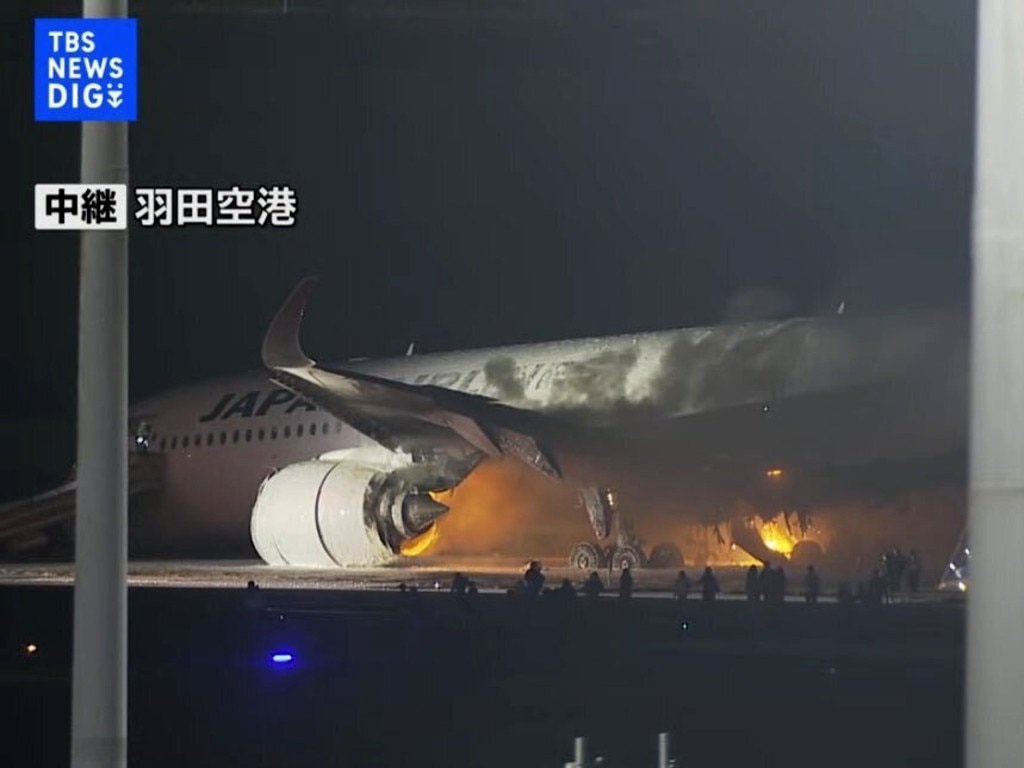

Transport safety officials in Japan are now combing through audio recordings of communications between air traffic control and both aircraft.
According to reports, Coast Guard pilot Captain Genki Miyamoto, 39, pulled himself from the wreckage before radioing for help.
“The aircraft exploded on the runway,” he reportedly said. “I escaped. The [status of the] other crew members is unknown.”
Tokyo Metropolitan Police said he sustained serious injuries and remains in hospital in a critical condition.
Coast Guard plane lacked sophistication
Another crucial element of the accident is the fact the Coast Guard plane wasn’t equipped with an Automatic Dependent Surveillance-Broadcast (ADS-B) transponder.
According to the US Federal Aviation Administration, an ADS-B provides a three-dimensional snapshot of a plane’s position and identification.
It automatically transmits information including a GPS location, altitude and ground speed to air traffic control and other aircraft every second.
The Coast Guard has announced its own investigation.
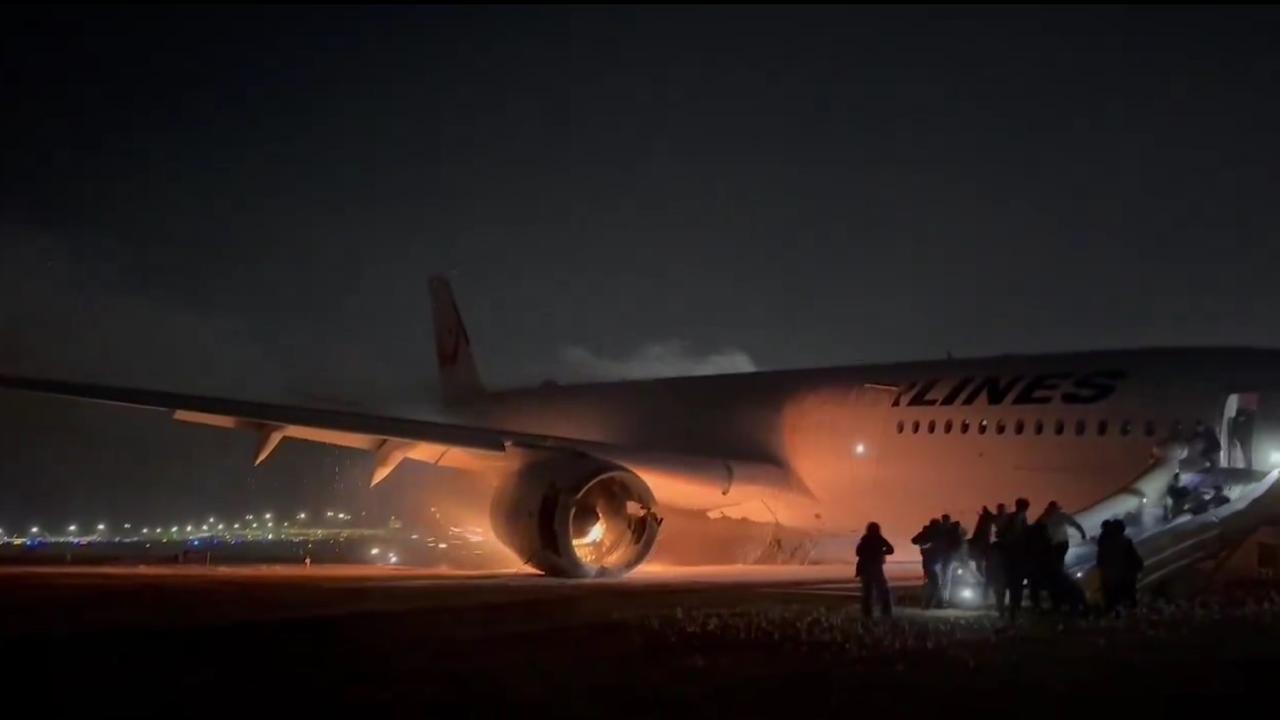
Hiraoka Shigenori, head of Japan’s Civil Aviation Bureau, told reporters his agency “will work with the transport ministry to determine the cause of the accident”.
“The scene needs to be preserved for that, but we will try our best for earliest resuming of airport operation as it is the busy time of the year,” Mr Shigenori said.
He insisted the investigation was “not yet at the stage [where] we can say anything for sure about the cause of the accident”.
Airport busier than normal
On Tuesday, Haneda Airport was dealing with considerably more flights than normal – and it is already one of Japan’s busiest hubs.
But a number of military and Coast Guard planes took off on Tuesday, bound for the country’s west, where a devastating earthquake on Monday killed at least 55 people.
A 7.6-magnitude quake struck the Ishikawa prefecture on New Year’s Day and was followed by several serious aftershocks.

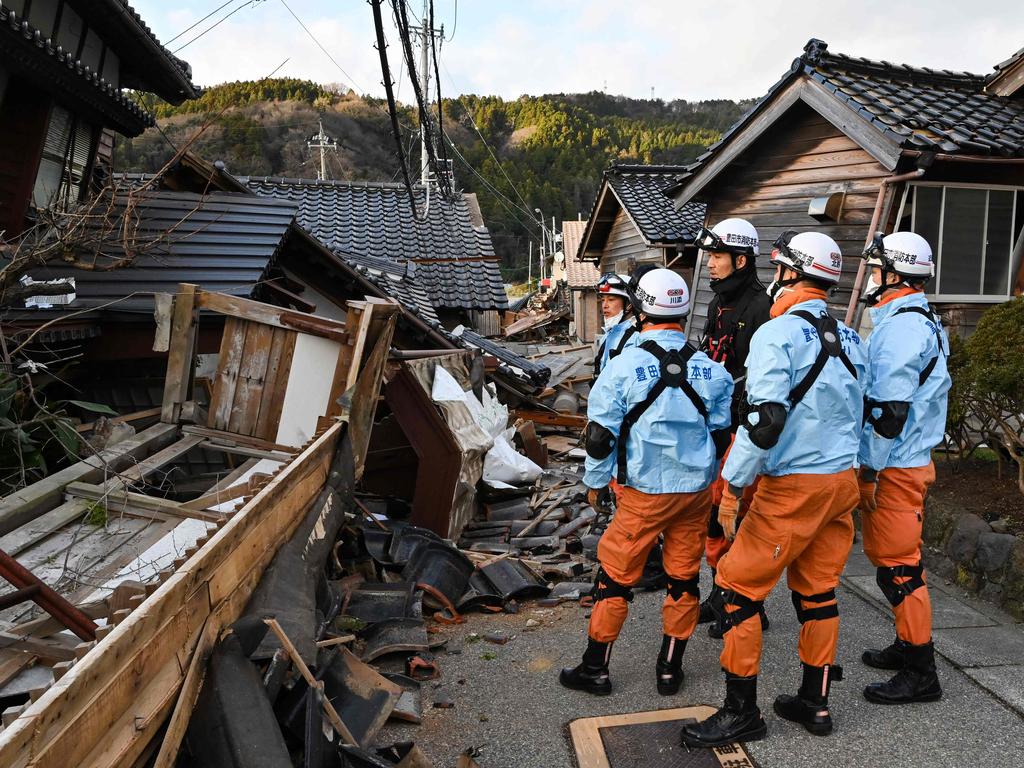
Alessio Patalano, a professor at King’s College London, told the BBC that airport officials needed to slot in a number of aid flights among civilian services.
“Haneda suffers from the same problem most Japanese airstrips do,” Professor Patalano told the BBC.
“Military and first responders flights only take priority in very extreme circumstances. Otherwise, they need to share the runways with civilian craft.”
‘It was hell’
One passenger on board JAL516, 17-year-old Anton Deibe from Sweden, told a newspaper in his home country that “the entire cabin was filled with smoke within a few minutes”.
“We threw ourselves down on the floor. Then the emergency doors were opened, and we threw ourselves at them,” he said.
“The smoke in the cabin stung like hell. It was a hell. We have no idea where we are going, so we just run out into the field. It was chaos.”


Reports indicate the on-board announcement system did not work after the collision, creating initial confusion, so cabin crew used handheld loudspeakers to direct passengers.
“Get out quickly,” they shouted. “Stay calm. Do not take your luggage. Please co-operate.”
Flight attendants deployed three emergency exit slides – two at the front and one at the rear. The overwing exits were unusable because flames were already spreading outside.
Within 20 minutes, all on board had managed to slide down to safety and flee the aircraft, which at this point was already on fire.

Various passengers interviewed by Japanese media praised the calm and authoritative manner of flight attendants.
“The flight attendants told us to stay calm and instructed us to get off the plane,” Satoshi Yamake, 59, told the wire service Reuters.
Efforts by airport firefighters to contain the blaze were unsuccessful. A fire in an engine spread to one of the wings, while a blaze on the underside of the aircraft took hold and spread through the cabin.
The nose gear had collapsed shortly after the plane came to a stop, causing it to pitch forward. The plane’s tail later snapped and fell onto the runway.
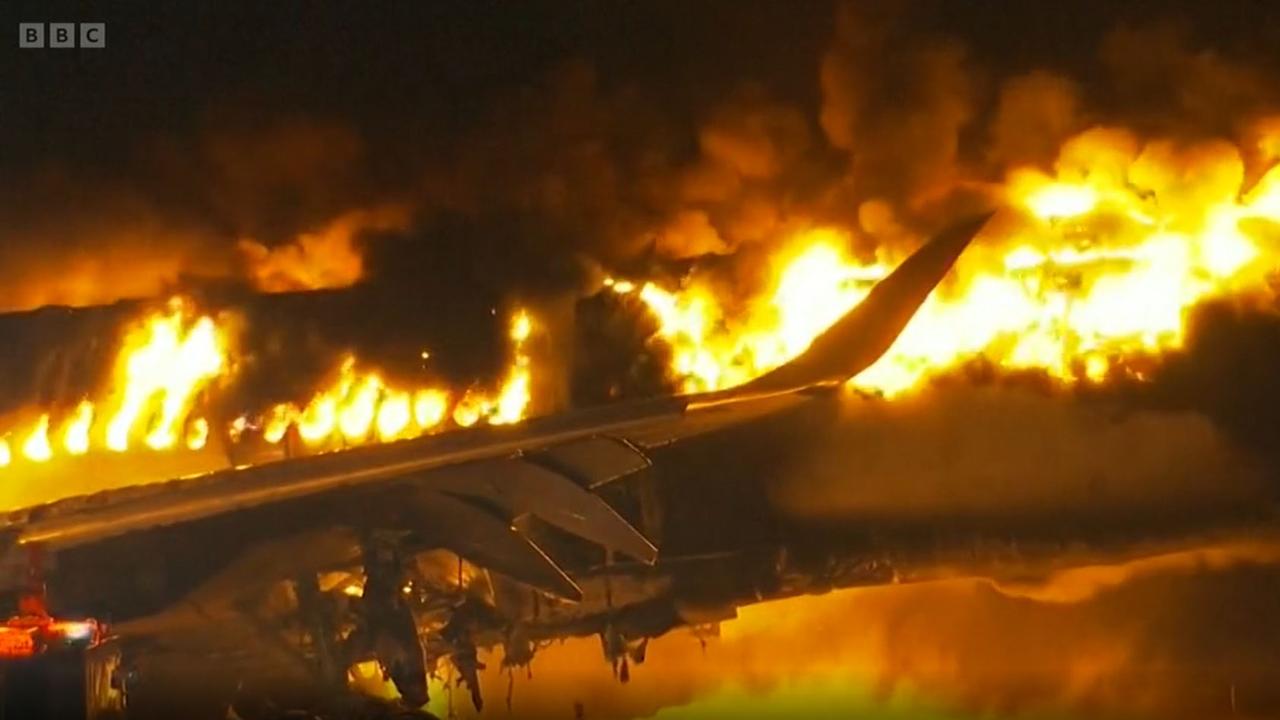
One passenger said the plane seemed to “explode” less than 10 minutes after everybody was safely evacuated.
“I can only say it was a miracle – we could have died if we were late,” Tsubasa Sawada, 28, told Reuters.
It took more than six hours for fire crews to extinguish the inferno.
Fourteen people on the JAL plane sustained non-life threatening injuries and four were taken to hospital for treatment.
Twelve Australians were on board the flight.
What saved hundreds of lives
The incident was the first major accident involving the A350, which entered service in 2015 and is now one of aviation’s most popular large passenger planes.
Japan Airlines took delivery of this particular plane in 2011.
Airbus announced it was sending specialists to Tokyo to assist Japanese investigators, while aviation officials from France, where the plane was manufactured, and Britain, where its Rolls-Royce engines are made, have also been deployed.
One distinct feature of the A350 is that its fuselage is made from carbon-composite fibres rather than conventional aluminium skin like other planes.
Boeing’s popular 787 aircraft have the same type of fuselage construction.
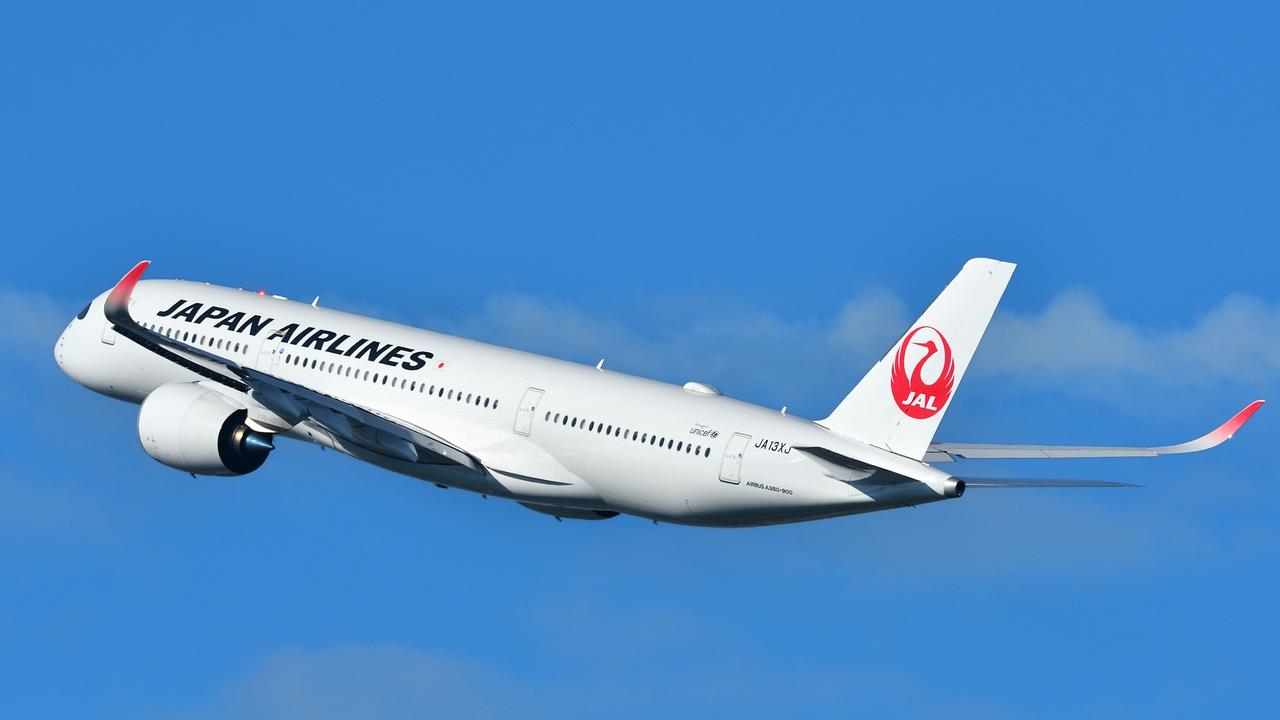
Aviation safety consultant John Cox told AP the industry doesn’t know a great deal about how composites burn.
“This is the most catastrophic composite-airplane fire that I can think of,” Mr Cox said.
“On the other hand, that fuselage protected (passengers) from a really horrific fire – it did not burn through for some period of time and let everybody get out.”
One of the reasons for that is the modern design of aircraft, former chair of the US National Transportation Safety Board Robert Sumwalt told CBS News.
“The side walls don’t burn as quickly as they would in previous airplanes,” Mr Sumwalt told the television network.
Mr Cox also praised the efforts of the flight crew in preventing any casualties, saying they did “a remarkably good job” handling the situation.
“It shows good training. And if you look at the video, people are not trying to get stuff out of the overheads. They are concentrating on getting out of the airplane.”
The cold light of day
As the sun rose on Tokyo on Wednesday, the gravity of the situation became clear in the cold light of day, with images showing the ashy remains of both aircraft.
In photographs from the above, all that remains of the A350 is its wings and piled of charred debris, while little is left of the Dash-8.

Large amounts of debris remain scattered across a long stretch of Runway C, which will remain closed indefinitely.
The airport’s three other runways have since reopened but the accident has caused significant disruptions, with more than 100 services cancelled on Wednesday.



